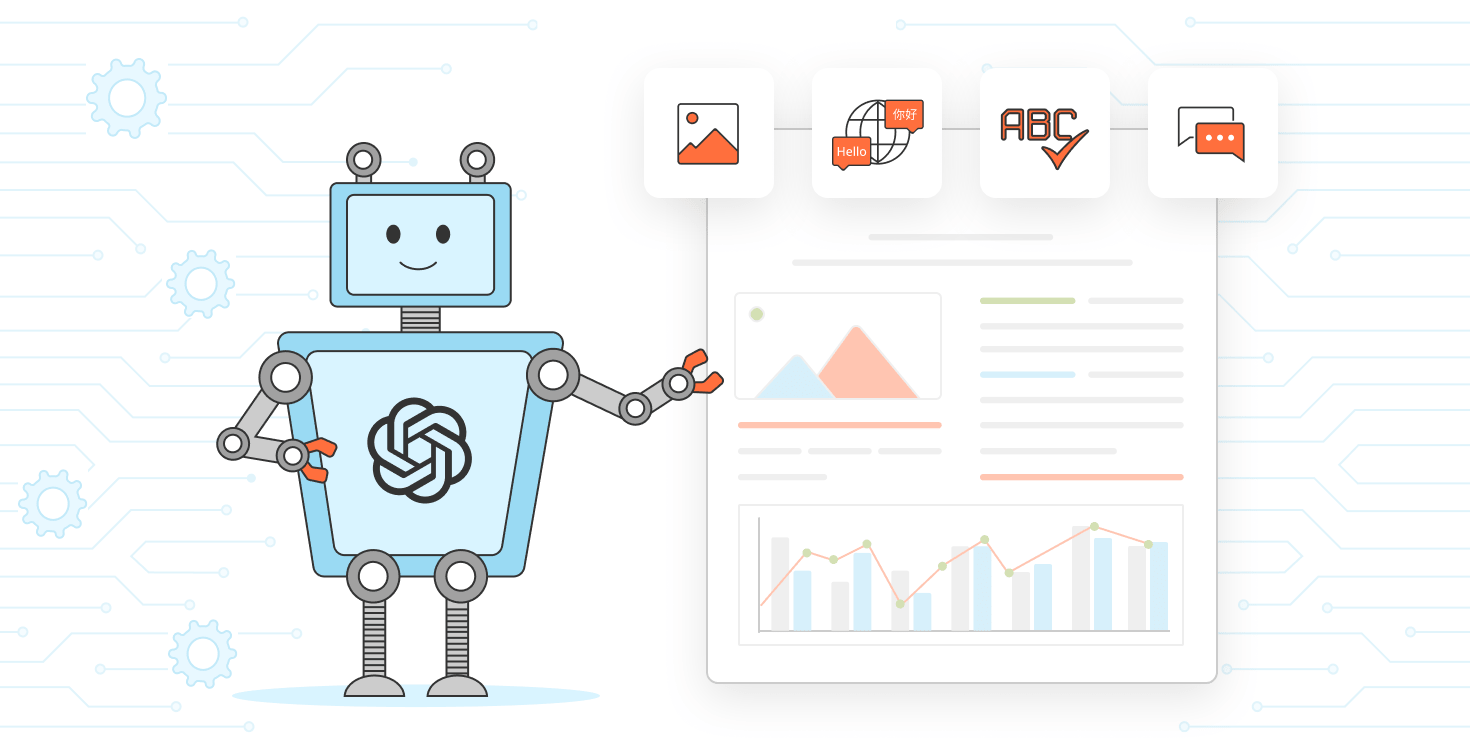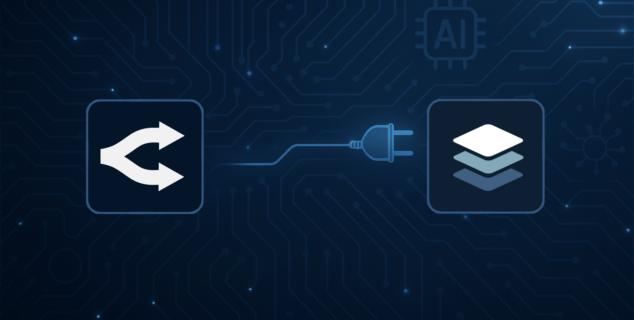- Blog /
What is generative AI: an easy guide
Generative AI is a remarkable milestone in the research and development of artificial intelligence. Powerful generative models adopted in content creation, design, architecture, coding, and music composition are profoundly changing the way we approach creativity and innovation, whether seen or unseen. Let’s discover the meaning of Generative AI, what it is capable of, and how you can make a practical use of it.

What is generative AI
Generative AI focuses on creating models capable of generating original and creative content, such as images, music, text, and even videos. Unlike traditional AI, which is mainly used for classification and prediction tasks, generative AI aims to generate new data that resembles the patterns and characteristics of the training data it was exposed to.
The history of generative AI can be traced back to the early days of neural networks in the 1960s and 1970s. At that time, researchers were exploring the concept of using neural networks to model and simulate human cognitive processes. They developed the first generative models, such as the Boltzmann machine, which could learn and generate data by sampling from a probability distribution. However, due to computational limitations and the lack of sufficient training data, these early models were not able to generate high-quality content.
The field of generative AI experienced a renaissance in the 2010s with the emergence of deep learning and the development of generative models known as generative adversarial networks (GANs) and variational autoencoders (VAEs).

In recent years, generative AI has made significant advancements across various domains. For example, in computer vision, GANs have been used to generate realistic images, synthesize new scenes, and even perform image-to-image translations. In natural language processing, generative models like OpenAI’s GPT have demonstrated the ability to generate coherent and contextually relevant text. This has led to applications in chatbots, language translation, and content generation.
However, with the increasing capabilities of generative AI, ethical concerns and challenges have also arisen. The generation of deepfakes, which are manipulated videos or images that appear genuine, raises concerns about misinformation and the potential for malicious use. Ensuring the responsible and ethical deployment of generative AI remains an ongoing challenge.
Generative AI use cases
Generative AI has demonstrated its versatility in performing a wide range of creative tasks. Some of the notable applications where generative AI is adopted include:
Text Generation: Generative AI models, such as language models based on recurrent neural networks (RNNs) or transformers, have the ability to generate high quality texts.
Image Generation: Models like Generative Adversarial Network (GANs) can generate new, realistic images that resemble the patterns and styles of the training data. This has applications in creating artwork, generating synthetic images for data augmentation in computer vision tasks, and even generating realistic faces or objects.
Music Composition: AI can compose original pieces of music based on the patterns and styles learned from analyzed musical datasets. These models can generate melodies, harmonies, and even entire compositions, opening up possibilities for music creation, soundtracks, and personalized music recommendations.
Video Synthesis: Generative AI techniques can generate new videos by combining and manipulating existing video clips or images. This can be used for video synthesis, video inpainting, and video-to-video translation tasks. It enables applications like generating synthetic training data for computer vision algorithms or creating special effects in movies.
Virtual Character Creation: Generative AI can be employed to create virtual characters, including their appearance, personalities, and behaviors. By training generative models on large datasets of human behavior, virtual characters can be generated with specific characteristics, making them more lifelike and interactive.
Recommendation Systems: Generative AI models can be utilized to generate personalized recommendations for users based on their preferences and historical data. Trained user behavior, generative models can create recommendations for products, movies, music, and more.
Game Design: Generative AI has been applied to game design, where it can generate game levels, environments, characters, and even game mechanics. This allows for the automated creation of game content, enhancing game replayability and reducing the need for manual content creation.
These are just a few examples of the tasks that generative AI can perform. The field is continuously evolving, and with advancements in technology, it is likely to expand further, enabling even more creative and practical applications.
Generative AI examples in popular software
Generative AI models have gained significant popularity and integration into various software applications. Here are a few examples of using AI inside popular software applications:
Adobe Photoshop AI tools
Adobe Photoshop, one of the leading image editing software, has integrated generative AI models to enhance its capabilities. For instance, the “Content-Aware Fill” feature uses a generative model to intelligently fill in missing parts or remove the unwanted content in an image.

ChatGPT
Via ChatGPT API, it is possible to create a variety of apps and components that integrate capabilities of ChatGPT into various software to enable text generation, analysis, translation, and other language processing tasks. It is used, for example, in social media content creation apps like Vista Social, customer service chatbots of Shopify and Meta, or AI helper plugin in ONLYOFFICE Docs.

Google’s DeepDream
Google’s DeepDream is a popular generative AI model that alters and enhances images in a dream-like, surrealistic manner. It has been integrated into various applications, including photo editing tools, mobile apps, and even online platforms where users can upload their images and apply the DeepDream effect.

Autodesk Dreamcatcher
Dreamcatcher is a generative design software developed by Autodesk. It leverages generative AI algorithms to help designers and engineers explore thousands of design options based on specified constraints and goals. The software generates innovative and optimized designs that might be difficult to conceive using traditional methods.


OpenAI’s DALL-E
OpenAI’s DALL-E is generative AI models that combines text and image understanding. It has been integrated into various software applications, allowing users to generate images based on text prompts or perform advanced image analysis tasks, for example, CALA operating system that generates product designs based on prompts and Microsoft’s Designer app.

How generative AI is used for text generation
Generative AI, such as the GPT, is widely used for generating texts for a very diverse range of purposes. One of the most popular applications for it is content generation which is particularly useful in tasks like article writing, social media posts, and creative writing. However, it is by far not limited by just plain text creation: other scenarios include powering chatbots and virtual assistance, language translation, as well as language enhancement and improvement of content quality.
Benefits that generative AI brings to its users for text generation include:
Time and Cost Efficiency. Generative AI models can generate large volumes of text quickly and efficiently, saving time and resources compared to manual creation. This is particularly advantageous in content-heavy industries like publishing, journalism, and marketing.
Consistency. It ensures consistency in writing style, tone, and vocabulary. This is beneficial when maintaining a consistent brand voice, generating content for series or franchises, or creating multilingual content with a unified voice.
Scalability. Generative AI models can handle large-scale text generation needs, accommodating diverse requirements from individual users to enterprise-level applications. The models can be easily deployed and scaled up to meet growing demands.
Unbiased and Neutral Output. Generative AI generates text based on the data it is trained on and does not possess personal biases or opinions. This can help mitigate human biases in content creation, ensuring a more neutral and objective perspective.
Despite these benefits, one must keep in mind the concerns surrounding the use of AI in content generation and communication. Due to relying on the vast amount of openly available and permanently aging data for its training, AI models may also provide potentially incorrect or incomplete information. The technology should be used responsibly and ethically, as it may produce misleading or inappropriate content if not guided or monitored appropriately.
Elevate your writing with AI helper in ONLYOFFICE Docs
Generative AI is a captivating field that has evolved over time, leveraging advancements in neural networks, deep learning, and reinforcement learning. It has revolutionized content generation across multiple use scenarios, and is coming closer to us every day, woven into our work and lifestyle apps.
ONLYOFFICE Docs suite features a ChatGPT-powered AI helper plugin that connects to your OpenAI account and helps you with text creation and editing, performing tasks like writing and summarizing, generation of images, translation, and word analysis.*
Upgrade your office setup with ONLYOFFICE Docs and explore the new way or working of text, powered by AI:
USE IN THE CLOUD INSTALL ON-PREMISES
*Please note that ONLYOFFICE assumes no responsibility for the accuracy or reliability of the information provided by ChatGPT.
Create your free ONLYOFFICE account
View, edit and collaborate on docs, sheets, slides, forms, and PDF files online.


